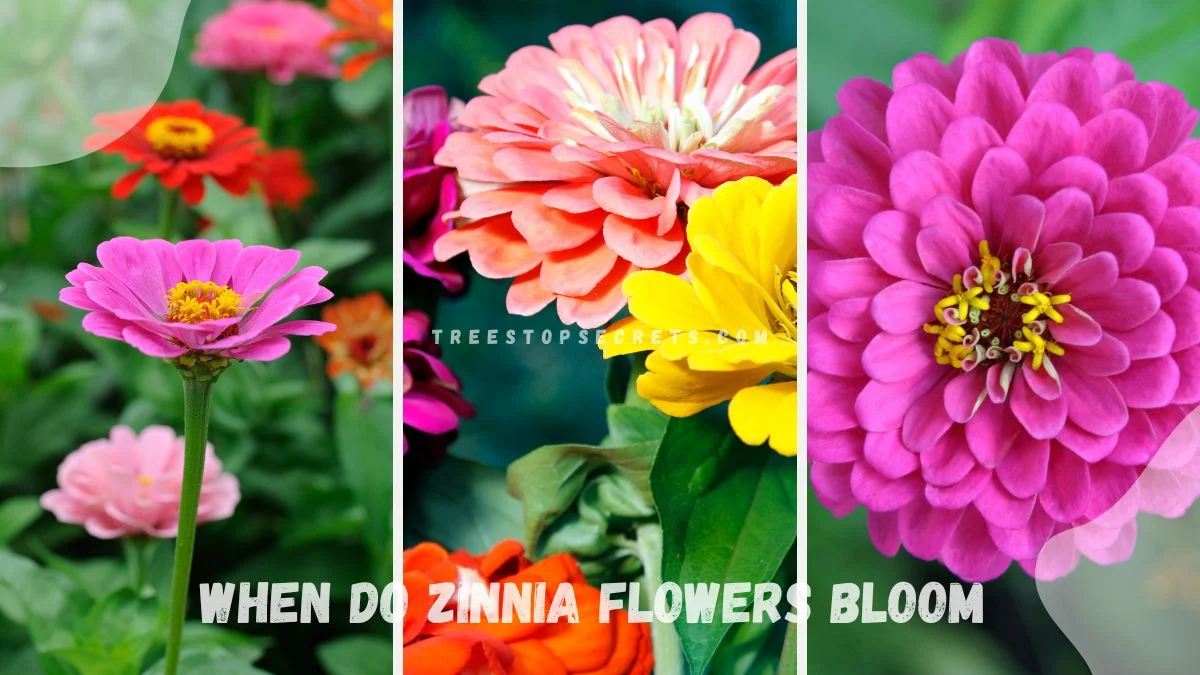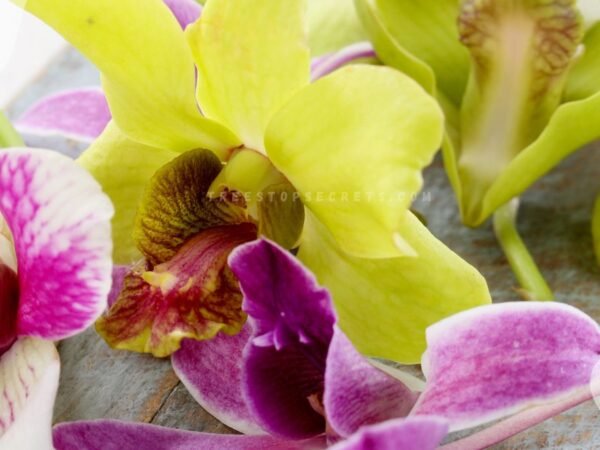Zinnia flowers bloom from late spring to the first frost in fall, providing vibrant colors to your garden. These hardy annuals thrive in warm, sunny conditions and are known for their long blooming period. With proper care and suitable growing conditions, Zinnias can bloom continuously, adding a bright and cheerful display to landscapes and gardens. Whether you're a seasoned gardener or a novice, understanding when Zinnia flowers bloom helps in planning and maintaining a flourishing garden throughout the warmer months.
Zinnia flowers typically bloom from late spring until the first frost of fall. They flourish best in well-draining soil and full sunlight. In USDA Hardiness Zones 3 to 10, you can expect Zinnias to start blooming as early as May or June. In warmer regions, they can continue blooming through October. Proper spacing, regular watering, and deadheading old blooms can extend their flowering season, ensuring a continuous display of vibrant flowers. Varieties like Zinnia elegans and Zinnia angustifolia are popular choices for prolonged blooming.
To keep your garden lively with Zinnia blooms, I have more tips on planting and maintaining these beautiful flowers, ensuring they flourish in any garden setting.
Key Takeaways
- Understand the bloom time of zinnia flowers to plan your garden effectively.
- Plant zinnias in well-draining soil and full sun for optimal growth.
- Provide proper care techniques such as regular watering and deadheading to encourage more blooms.
- Are you ready to transform your garden into a colorful oasis that attracts butterflies and bees alike with flowers like compact zinnias?
- Combat common pests and diseases by inspecting plants regularly and using appropriate treatments.
- Ensure continuous blooming by deadheading spent flowers and providing adequate nutrients and sunlight.
Understanding Zinnia Bloom Time
Bloom Months
Zinnia flowers typically bloom from June to October, with peak blooming occurring in July and August. However, the exact bloom months can vary based on the specific location and climate conditions. In warmer regions, zinnias may start blooming earlier in May, while in cooler areas, flowering might be delayed until late June.
When it comes to the duration of zinnia blooms, these vibrant flowers can last for several weeks or even months, depending on the care provided. Zinnias will continue to bloom profusely until the arrival of the first frost in the fall. It's essential to monitor the weather forecast to enjoy your zinnias' colorful display for as long as possible.
Factors Influencing Bloom
Light
Full sunlight is crucial for zinnias to thrive and produce abundant blooms. These sun-loving flowers require at least 6-8 hours of direct sunlight daily to flourish. Insufficient light can lead to leggy growth and poor flowering. To optimize light exposure, plant zinnias in a location with ample sunlight and avoid shading from tall plants or structures.
Temperature and Humidity
Maintaining the right temperature and humidity levels is key to successful zinnia blooming. Zinnias prefer warm temperatures between 70-80°F during the day and slightly cooler nights. High humidity levels can increase the risk of fungal diseases, so it's important to provide adequate air circulation around the plants.
Zinnias are sensitive to frost and cold temperatures, which can halt blooming and damage the flowers. To protect zinnias from chilly nights, consider covering them with a light fabric or bringing potted zinnias indoors when frost is forecasted. Avoid planting zinnias in low-lying areas prone to frost pockets.
How to Plant Zinnias
Choosing the Right Soil
When planting zinnias, selecting the appropriate soil is crucial for their growth and blooming. Ensure the soil is well-draining to prevent waterlogging, which can hinder zinnia development. Mix in organic matter like compost to enhance soil fertility.
To promote vibrant zinnia blooming, opt for loamy soil with a slightly acidic to neutral pH level. Zinnias thrive in soils with good aeration, allowing their roots to access oxygen easily. Avoid heavy clay soils that can impede root growth and overall plant health.
For planting zinnias successfully, prepare the soil by loosening it to a depth of at least 6-8 inches. This loosening facilitates root penetration and water absorption, aiding in zinnia establishment and subsequent blooming. Incorporate a balanced fertilizer based on soil test results for optimal zinnia growth.
Sowing Seeds
When planting zinnia seeds, start by choosing a sunny location with well-drained soil. Sow the seeds directly into the garden bed after the last frost date has passed, ensuring they receive ample sunlight for germination. Lightly cover the seeds with soil to protect them from birds or pests.
Proper seed sowing techniques are essential for successful zinnia blooming. Space the seeds according to the variety's recommendations, typically 6-18 inches apart depending on the zinnia type. Water the seeds gently after planting to provide adequate moisture for germination without causing waterlogging.
To maximize seed germination and blooming, maintain consistent moisture levels in the soil during the germination period. Avoid overwatering, as it can lead to fungal diseases that may inhibit zinnia growth. Consider using a soaker hose or drip irrigation system to deliver water directly to the roots.
Optimal Zinnia Care Techniques
Watering Practices
Proper watering is crucial for zinnias to bloom vibrantly. Water zinnias deeply once a week, allowing the soil to dry slightly between waterings. This practice encourages robust root growth and healthy flower production.
To ensure zinnias thrive, avoid frequent shallow watering. Instead, focus on providing a deep soak to penetrate the roots and promote strong, sturdy stems. Overwatering can lead to root rot, so monitor soil moisture carefully.
The frequency of watering zinnias depends on weather conditions. During hot, dry spells, increase watering to keep the soil moist. In cooler weather or rainy periods, reduce watering to prevent waterlogged roots.
Fertilizing Tips
Choosing the right fertilizer is essential for promoting zinnia blooming. Use a balanced fertilizer with equal parts nitrogen, phosphorus, and potassium to support overall plant health and encourage abundant flower production.
Zinnias benefit from regular fertilization throughout the growing season. Apply fertilizer every 4-6 weeks, starting when the plants are established and continuing until late summer. This consistent feeding schedule provides zinnias with the nutrients they need to thrive.
Incorporate organic matter into the soil before planting zinnias to enhance fertility naturally. Compost or well-rotted manure enriches the soil with essential nutrients, creating an ideal environment for zinnias to flourish.
Encouraging More Blooms
Proper Pruning
Pruning zinnia plants is essential for abundant blooms. By removing dead or faded flowers, the plant directs energy towards new growth. Pruning young zinnias encourages branching and results in more flowers blooming throughout the season. To effectively prune zinnia plants, use clean, sharp scissors to snip off spent blooms just above a set of leaves.
Propagating Zinnias
To encourage more blooms, consider propagating zinnias. This process involves creating new plants from existing ones, leading to an increased flower yield. Suitable techniques for propagating zinnias include stem cuttings and division. By propagating zinnias, you can ensure a continuous supply of fresh blooms for bouquets or indoor decoration.
Types of Zinnias
Common Varieties
Common zinnia varieties differ in colors, sizes, and shapes. Some popular ones include the Dahlia Flowered Zinnia, known for its double blooms resembling dahlias. The Cactus Flowered Zinnia has spiky petals, adding a unique touch to gardens.
Zinnias like the Cut and Come Again variety are excellent for continuous blooming. Their flowers can be cut, and new blooms will replace them quickly. On the other hand, Lilliput Zinnias are small-sized with multiple blooms per stem, creating a vibrant display.
Impact on Blooming
The choice of zinnia varieties directly influences the blooming period in gardens. For instance, Cut and Come Again zinnias ensure a prolonged blooming season due to their ability to produce new flowers continually. In contrast, Dahlia Flowered zinnias offer a burst of blooms that brighten up spaces instantly.
When planning a garden, consider mixing various zinnia types to create a dynamic and long-lasting blooming landscape. By combining different varieties like the Cactus Flowered Zinnias with the Lilliput Zinnias, you can achieve a visually appealing garden with diverse blooms.
Dealing with Common Pests and Diseases
Identifying Pests
Zinnias are susceptible to powdery mildew, a common pest that affects their blooming. Look for white, powdery spots on leaves as a sign of this fungal disease. To prevent powdery mildew, ensure proper air circulation around zinnia plants.
Discovering aphids on zinnias is another common issue. These small insects can cause damage by sucking sap from the plant. Signs of aphid infestation include distorted leaves and sticky honeydew residue. Use insecticidal soap to control aphids on zinnias effectively.
Managing Diseases
When it comes to diseases, zinnias can fall victim to powdery mildew, which thrives in warm, humid conditions. Symptoms include white powdery patches on leaves and stems. To manage powdery mildew, remove and destroy infected plant parts promptly.
Another disease that affects zinnias is bacterial leaf spot, characterized by dark brown or black spots on leaves. Prevent bacterial leaf spot by avoiding overhead watering and providing adequate spacing between plants. Treat affected zinnias with copper-based fungicides.
Special Care for Continuous Blooming
Light Management
Zinnia flowers require adequate sunlight to bloom profusely. Direct sunlight for 6-8 hours daily is ideal. Adjust light exposure by placing zinnias in sunny spots.
To optimize zinnia blooming, ensure they receive morning sun. This gentle sunlight helps in photosynthesis, promoting flower production. Avoid excessive shade for healthy growth.
Managing light conditions involves regular monitoring of sun exposure. Rotate pots if needed to ensure even light distribution. Consider using grow lights for indoor zinnias.
Soil Maintenance
For continuous zinnia blooming, maintain well-draining soil. Amend soil with compost for nutrients and improved drainage. Regularly check soil moisture levels.
Essential soil maintenance includes weeding to prevent competition for nutrients. Mulching helps retain moisture and suppresses weeds, aiding zinnia growth.
Long-term strategies involve fertilizing regularly with balanced nutrients. Test soil pH and amend as necessary for optimal zinnia health.
Closing Thoughts
Frequently Asked Questions
When is the best time for zinnia flowers to bloom?
Zinnia flowers typically bloom from early summer to fall. The exact timing can vary depending on the specific variety of zinnias you are growing and your local climate conditions. Providing proper care and optimal growing conditions can help ensure abundant blooms throughout the season.
How should I plant zinnias for optimal blooming?
Plant zinnias in well-draining soil with full sun exposure. Sow seeds directly in the garden or start with seedlings after the last frost date. Space plants according to their mature size to allow for good air circulation. Proper planting techniques can promote healthy growth and vibrant blooms.
What are some effective zinnia care techniques?
Regular watering, deadheading spent blooms, and fertilizing lightly can help maintain healthy zinnia plants. Keep an eye out for signs of pests or diseases and address them promptly. Pruning leggy growth and providing support for taller varieties can also contribute to better blooming performance.
How can I encourage more blooms on my zinnia plants?
To encourage continuous blooming, deadhead faded flowers regularly to promote new growth. Ensure adequate sunlight, water consistently but avoid over-watering, and feed with a balanced fertilizer. Pinching back young plants can also stimulate branching and lead to more flower production.
What are the different types of zinnias available?
Zinnias come in various sizes, colors, and shapes, including dwarf varieties, giant blooms, and unique bicolor patterns. Common types include 'Benary's Giant,' 'Profusion,' and 'Cut and Come Again.' Choose zinnia varieties that suit your garden space, color preferences, and desired bloom characteristics.
Image Source: Paid image from CANVA



